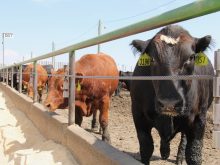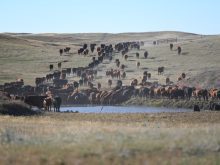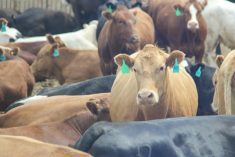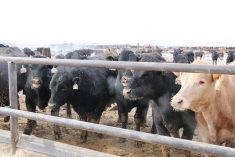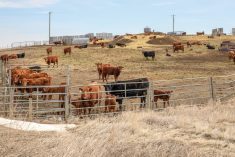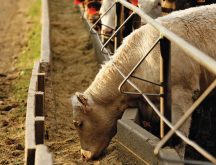Editor’s Note: This is Part 3 of a three-part series by Alberta rancher and consultant Sean McGrath with some thoughts on actions to benefit the Canadian beef industry. After a few more thoughts on where the industry is at today, McGrath takes a stab at what he thinks a vision statement might contain and welcomes further discussion.
A vision of the future
A vision statement can be one of the most powerful tools available to a company. It sets the big-picture goal for a business and provides a framework for communication. A well-crafted vision can provide the fuel to empower those in the business to assess its own performance and apply creativity towards a common goal. On a personal note, coming up with the right vision statement for our ranching operation has probably been the biggest transformational change we have made in the last 20 years and maybe the last 112.
Read Also

Harvest wraps up and fall work begins
At the Eppich famly ranch in western Saskatchewan, the fall harvest was successful with few breakdowns, cows and calves have been sorted and a new tractor has arrived
I think this can also be true of visioning for an entire industry. We need to step back and figure out where we want to be in 20 years or we can get buried tilting with the windmills of today. The most important aspect of a vision is that it is aspirational. Once the vision is clear, solving the problems and charting the path forward become the challenge.
I am far from capable of visioning the entire beef industry, but I have put together a few thoughts that I would like to leave open for discussion. Rather obviously, each topic could be a long discussion in its’ own right, so consider this a brief summary as food for thought.
Contribution to the economy
Canadian Beef Fast Facts shows the contribution of the beef industry to the Canadian economy at roughly $16 billion per year. If we take that number and divide by the number of beef cows (3.83 million) it works out to a contribution to the economy of $4,177 per cow. If we further extrapolate this to encompass the vision of seven million beef cows and added value through trade, I think that a reasonable target would be to shoot for at least $4,500 per cow. That equates to a $31.5 billion contribution, basically double what we do today. I think that would put beef into the big leagues with government and the public. To give some context, dairy’s contribution to GDP is estimated at almost $20 billion and canola’s is at $26.7 billion.
Farmer demographics
I debated this one a long time and think that it belongs at the end. The only way I see to progress towards the “people” goals is to build a vibrant, profitable and challenging industry. That said, it also takes people to accomplish the tasks to create that industry.
The average age of agricultural producers according to the last census is 55. For the purpose of visioning, I think this needs to be roughly 45. That means there is still room for older producers, but we need a real drive to increase youth in the industry. This creates energy, but also drives innovation, as young businesses often operate with different debt loads, cash requirements and ideas than equity-rich established entities. As well, a demographic shift means that more young families are involved with more potential future farmers in the works. Youth in agriculture also provide an important direct link to our educational system and bring farming/ranching back into the collective discussion. On the marketing side as well, moms are a much more powerful force than cowboys when it comes to connecting with the public.
If we are to become a global powerhouse in the beef space, then I think we need to make serious investments in ourselves as producers. This does not necessarily mean a university degree, although certainly I think that the number of industry participants with a degree will increase. It does mean investing in business training, production training and understanding of the industry and our specific market for our cattle.
The vision (or something like it)
The actual hardest part of the vision for our ranch was distilling it down to its essence. A good rule of thumb is that a vision statement should be fewer than 20 words, and preferably under 10. It should also be clear and understandable and should transcend time. So roughly, what I see as a vision for the Canadian industry:
“A world-leading industry that provides real value to customers and Canadians.”
I appreciate there are a lot of roadblocks to this vision and it is easy to dismiss the possibility of any of this occurring. I also appreciate that there are a tremendous number of visionaries in the industry. The rough vision I have outlined here may not fit with everyone’s ideas of the future (see the first paragraph). I do however think that we need to get serious about aspirational goals and vision so that we can chart a path forward and tackle issues proactively. Hopefully this article can invoke some discussion and visioning in your own operation as well.



